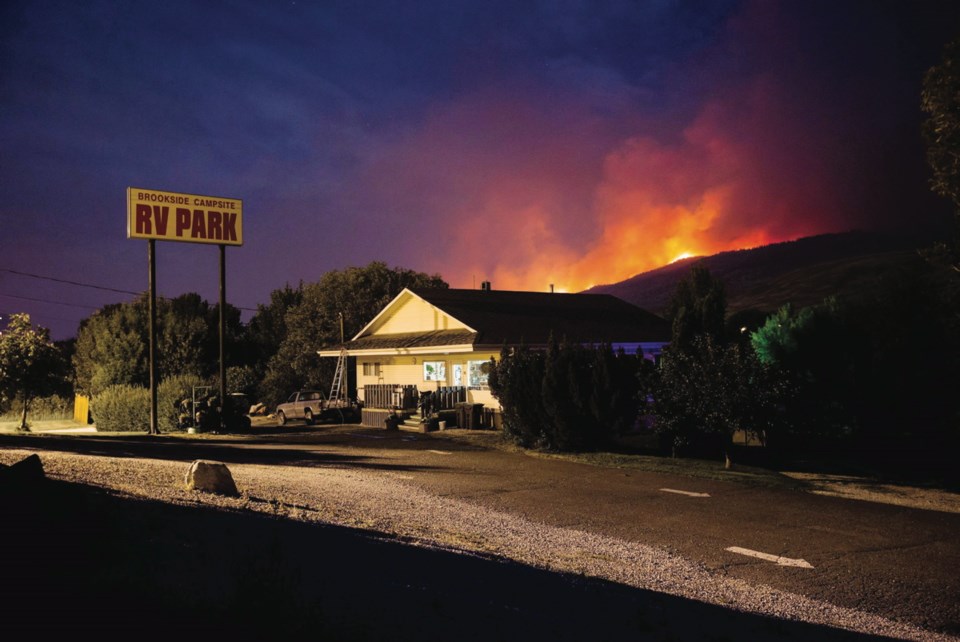Last year was the worst wildfire season in the province’s recorded history. More than 12,000 square kilometres burned, and more than 65,000 residents and business owners were displaced. The provincial state of emergency that resulted stretched an unprecedented 10 weeks, from early July until mid-September.
According to the report on the disaster that was released recently, direct fire suppression cost more than $564 million.
However, damage to property and communities is still being calculated, and the long-term health effects of breathing the smoke that blanketed Interior communities for weeks on end haven’t been determined. Measures are being put in place to address the events’ potentially lingering effects on residents’ mental health, however — a timely step given how close some of this spring’s wildfires have come to the areas burned last year.
Addressing the New Normal: 21st Century Disaster Management in British Columbia, the report prepared by former B.C. Liberal cabinet minister George Abbott and Sq’ewá:lxw (Skawahlook) First Nation Chief Maureen Chapman, reviews the steps that the province had taken to limit the risk of wildfires to B.C. communities since the last provincial state of emergency was declared 14 years earlier.
In August 2003, widespread wildfire had also prompted a provincewide state of emergency. That year, more than 2,500 wildfires across B.C. fires destroyed more than 334 homes and many businesses, forced the evacuation of more than 45,000 people and caused three deaths. The most well-known fire was the Okanagan Mountain Park fire, which burned through Kelowna suburbs, but Barrière and other Interior communities also suffered. The total cost of the 2003 fires is estimated to be $700 million.
One of the key recommendations that came out of the review of the 2003 fires was that government and communities needed to improve community safety through better fuel management in areas where forests and communities meet. Concerted efforts by the province, communities and First Nations, as well as residents, to remove stands of dead or dying trees in and around the edges of urban areas, to clear undergrowth, logs and fallen branches that could fuel fire, and to implement wildland-fire safety measures around forest communities significantly reduce a community’s risk to wildfire.
The B.C. government and the Union of British Columbia Municipalities set up the Strategic Wildfire Prevention Initiative in 2004, and identified more than one million hectares of hazardous fuels. The province kicked in $78 million over 12 years, then broadened the parameters and increased investment in 2016. The federal government also initially provided funding for community wildfire safety, also via the UBCM, for communities affected by mountain pine beetle.
However, as the Abbott and Chapman report shows, although some work was done, it was limited, has taken too long, became siloed within government, was under-resourced and was adopted by too few communities in at-risk areas.
And, let’s face it, except for those directly affected, memories of the Kelowna and Barrière fires started fading within a few years.
According to the 2018 report, only about 78,000 hectares of interface forest have been treated since 2004. That represents less than 10 per cent of the 800,000 hectares identified as moderate to high risk.
Overall, the report states that B.C. has made “disappointingly little progress on the goal of enhanced community safety since 2003.”
This echoes the B.C. auditor general’s recent audit on managing climate-change risks. That report states that the initiatives in place to prevent and mitigate wildfires in the province have been insufficient to substantially reduce wildfire risk.
“The number of hectares of land requiring fuel treatment in the province is extremely high,” it says.
“The current approach to reducing risk has been fragmented, and treatments are not always done in the areas of highest risk.”
The trauma of last year’s fires hasn’t had time to heal, and yet another fire season is already upon us. Dozens of families were evacuated recently from Interior communities because of large wildfires, with many residents throughout B.C. wondering what the coming months hold.
Environment Canada predicts another hotter-and-drier-than-normal summer. With so much riding on how much rain falls and where it falls in these last weeks of June, thoughts are turning to the woods and brush surrounding our communities.
Will B.C. face yet another wild wildfire season?



